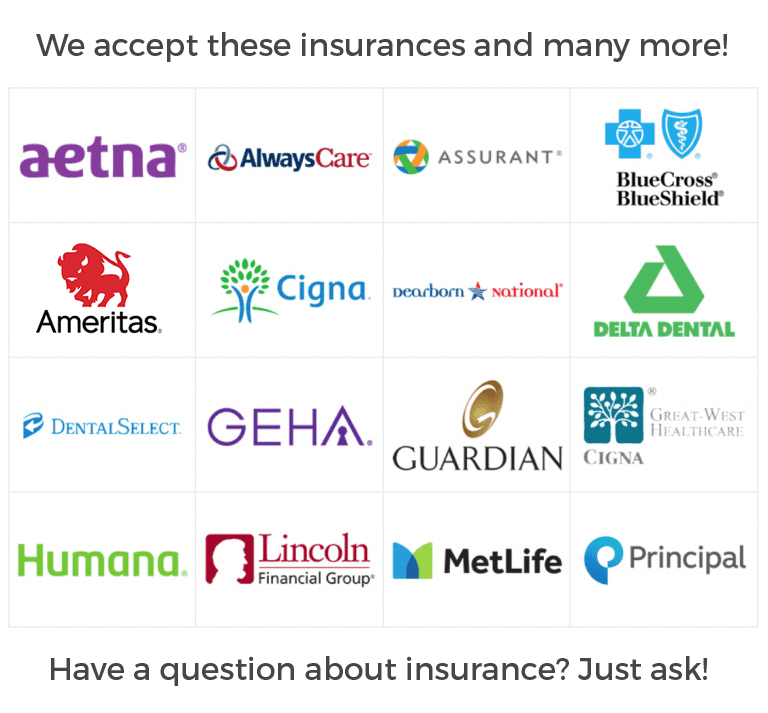 If you want to align your teeth discreetly, you have probably noticed the many options at your disposal, two being Invisalign® and lingual braces. While both options share some similarities, they also have significant differences for you to consider.
If you want to align your teeth discreetly, you have probably noticed the many options at your disposal, two being Invisalign® and lingual braces. While both options share some similarities, they also have significant differences for you to consider.
Appearance
One of the most significant differences between the two appliances is appearance. Invisaline is virtually invisible, using SmartTrack® plastic aligners to shift the teeth into a more linear position gradually. These aligners are custom-made for each patient and are ideal for teens and adults. While they must be worn about 22 hours daily, patients can remove them for eating and cleaning. This makes them a popular choice for those uncomfortable with the noticeable appearance of traditional metal braces.
Alternatively, lingual braces use brackets, wires, and bands like traditional braces. The main difference is that the orthodontist installs them on the back of the teeth rather than the front. Lingual braces are popular for those who may require traditional braces over Invisalign but do not want them to be noticeable.
Comfort
Another consideration between the two options is their comfort levels. Invisalign's pattened SmarkTrack material provides a smooth and comfortable fit, limiting the irritation to the gums and cheeks commonly associated with traditional orthodontic appliances. Invisalign is also ideal for those who suffer from metal allergies or play instruments or sports.
On the other hand, Lingual braces can be more challenging to adapt to due to the bulk of the bracket being installed on the back of each tooth. Patients will need to adapt to eating and speaking, and they may cause some discomfort on the tongue during the first few weeks of treatment.
Treatment duration
Treatment durations can vary depending on the patient's unique oral condition. Invisalign can take anywhere from six to 18 months. Patients must receive new aligners (trays) every two weeks to keep up with the shift. Receiving new aligners will require patients to schedule an appointment with the orthodontist every two weeks so that they may keep track of their progress and ensure they remain on schedule.
Lingual braces generally take longer to complete, as a patient's condition may be more complex. However, the patients will not require as many orthodontist appointments as the brackets are not removable. Patients can expect a treatment duration between 18 and 36 months.
Maintenance
One of the key differences between Invisalign and lingual braces is the maintenance they require. For Invisalign, patients must remove their aligners to eat, brush, and floss. Doing so ensures they maintain excellent dental hygiene habits. Patients must clean the aligners daily to avoid any build-up or odors that may lead to hygiene issues and even halt treatment progress.
Moreover, maintenance of lingual braces is similar to traditional metal braces, with careful oral hygiene to ensure effective treatment. Patients must carefully brush and floss around the brackets and wires to ensure good oral hygiene and prevent cavities and gum disease. Considering the hardware is behind the teeth, it may take some getting used to. The orthodontist will demonstrate how to perform proper oral hygiene swiftly yet efficiently.
Discover the most effective option for you
Invisalign and lingual braces are effective treatment options that can do wonders for your smile. A bonus is that they can do it discreetly. If you or someone you know is interested in aligning their smile, contact us today so that we can determine which appliance will be the most effective to meet your needs.
Request an appointment or call Nice Nice Dental at 623-777-4227 for an appointment in our Peoria office.
Related Posts
Invisalign® has improved orthodontic treatment by offering a discreet and effective way to straighten teeth. Unlike traditional braces with visible wires and brackets, Invisalign uses nearly invisible clear aligners. However, achieving the best results with Invisalign requires proper maintenance and care.This review discusses how patients can maintain the quality and longevity of their Invisalign aligners…
Invisalign® has become revolutionary in orthodontics, proving an effective way to straighten teeth discreetly. The system uses smart technology and aligners to shift the teeth in as little as six to 18 months. While many are aware of this fact, there are specific dental conditions known as malocclusions that this revolutionary system is known to…
The journey toward a straighter smile is exciting but comes with a crucial decision: Invisalign® or traditional braces? Both options have advantages, and understanding their differences can help you make an informed decision about your teeth-straightening treatment goals. It is not only about achieving a straighter smile but also about finding the path that best…



